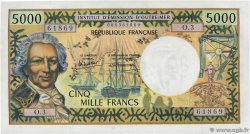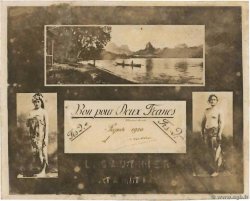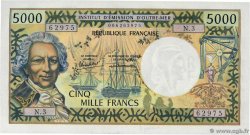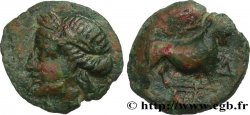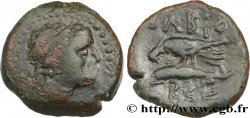Live auction - 518137 - 50 Centimes TAHITI 1920 P.-


Devi Sign-in ed essere un offerente approvato fare un'offerta, Login per fare offerte. Conti sono soggetti ad approvazione e di approvazione sono raggiunti entro 48 ore. Non aspettare fino al giorno di una vendita si chiude per registrarti.Confermando la tua offerta su questo oggetto ti impegni ad un contratto legalmente vincolante per l'acquisto di questo prodotto e fare clic su «offerta» costituisce accettazione dei termini di utilizzo de live auctions cgb.fr.
Offerta deve essere collocato in euro gli importi interi vendita only.The si chiuderà al momento sulla descrizione dell'oggetto, eventuali offerte pervenute al sito dopo l'orario di chiusura non verranno eseguite. Volte transmition possono variare e le offerte potrebbero essere respinto se si attende per gli ultimi secondi. Per ulteriori informazioni ckeck le FAQ Live auction.
Le offerte vincenti saranno sottomesse ai 18% per spese di compartecipazione alla vendita.
Le offerte vincenti saranno sottomesse ai 18% per spese di compartecipazione alla vendita.
| Valutazione : | 5 000 € |
| Prezzo : | 2 600 € |
| Offerta maxima : | 2 700 € |
| Data di fine vendita : | 07 gennaio 2025 18:41:47 |
| partecipanti : | 2 partecipanti |
Valore facciale : 50 Centimes
Data: (1920)
Provincie/Banche Banque André Krajewski
N° nella opera di riferimento P.-
Altro riferimento K.539
Alfabeto - Serie : N°731
Commento
Les billets de la Banque André Krajewski sont très rares, cet exemplaire est exceptionnel. Composé de deux parties unifaces sur papier fort. Il ressemble au Bon pour 2 Francs illustré dans le Kolksy mais en version anglaise. Au recto (uniface), seul le texte en haut est en français "Bon pour cinquante centimes". Au verso (uniface) à nouveau un tampon Andre Krajewski, la valeur 0,50 et un tampon ovale : Krajewski Papeete (Tahiti) et le numéro 731 manuscrit au centre. Nous connaissons un autre exemplaire, numéroté 738 mais en version française ! (livre Tahiti et sa Monnaie, Ch. Beslu 1997). Peut-être que les deux parties devaient être collées ensemble à l'émission pour rendre le billet plus solide et faciliter une impression recto puis verso pour les versions françaises et anglaises. Le Docteur Kolsky indique que les exemplaires vus étaient sur carton mais peut-être étaient-ils aussi composés de deux parties collées. Ce document incroyable apporte décidément autant de réponses que de questions. (voir article Bulletin Numismatique 243 juillet 2024).
Banknotes from the André Krajewski Bank are very rare, this example is exceptional. Composed of two single-sided parts on strong paper. It resembles the Bon pour 2 Francs illustrated in Kolksy but in English version. On the front (single-sided), only the text at the top is in French \\\"Bon pour quinze centimes\\\". On the back (single-sided) again an Andre Krajewski stamp, the value 0.50 and an oval stamp: Krajewski Papeete (Tahiti) and the number 731 handwritten in the center. We know of another example, numbered 738 but in French version! (book Tahiti et sa Monnaie, Ch. Beslu 1997). Perhaps the two parts were to be glued together at the time of issue to make the note more solid and facilitate printing on both sides for the French and English versions. Dr. Kolsky indicates that the examples seen were on cardboard but perhaps they were also composed of two glued parts. This incredible document definitely provides as many answers as it does questions. (see article Bulletin Numismatique 243 July 2024)
Banknotes from the André Krajewski Bank are very rare, this example is exceptional. Composed of two single-sided parts on strong paper. It resembles the Bon pour 2 Francs illustrated in Kolksy but in English version. On the front (single-sided), only the text at the top is in French \\\"Bon pour quinze centimes\\\". On the back (single-sided) again an Andre Krajewski stamp, the value 0.50 and an oval stamp: Krajewski Papeete (Tahiti) and the number 731 handwritten in the center. We know of another example, numbered 738 but in French version! (book Tahiti et sa Monnaie, Ch. Beslu 1997). Perhaps the two parts were to be glued together at the time of issue to make the note more solid and facilitate printing on both sides for the French and English versions. Dr. Kolsky indicates that the examples seen were on cardboard but perhaps they were also composed of two glued parts. This incredible document definitely provides as many answers as it does questions. (see article Bulletin Numismatique 243 July 2024)








 Segnalare un errore
Segnalare un errore Stampate la pagina
Stampate la pagina Condividi mia selezione
Condividi mia selezione Fai una domanda
Fai una domanda Consegnare / vendere
Consegnare / vendere
 Descrittivo
Descrittivo

